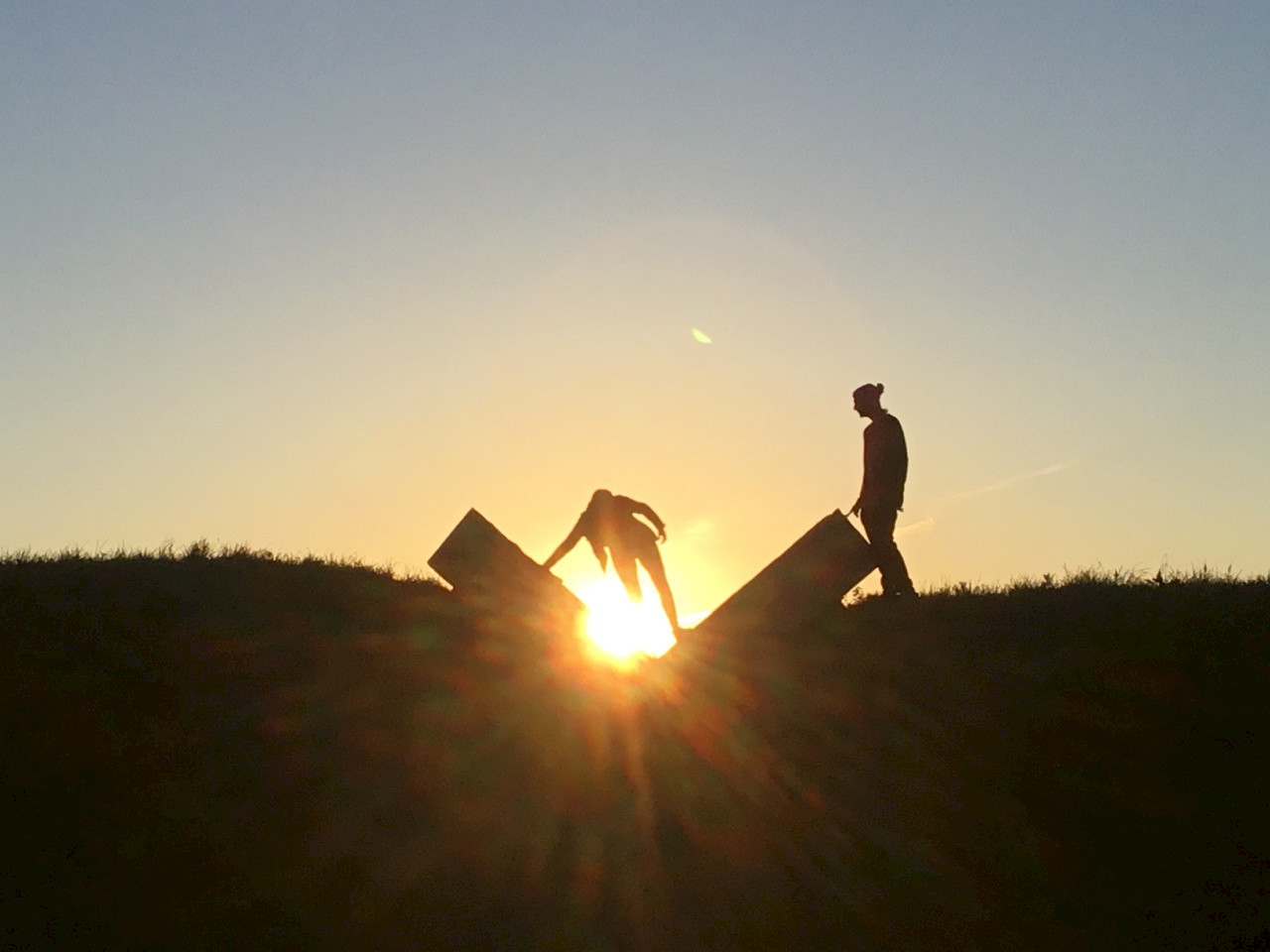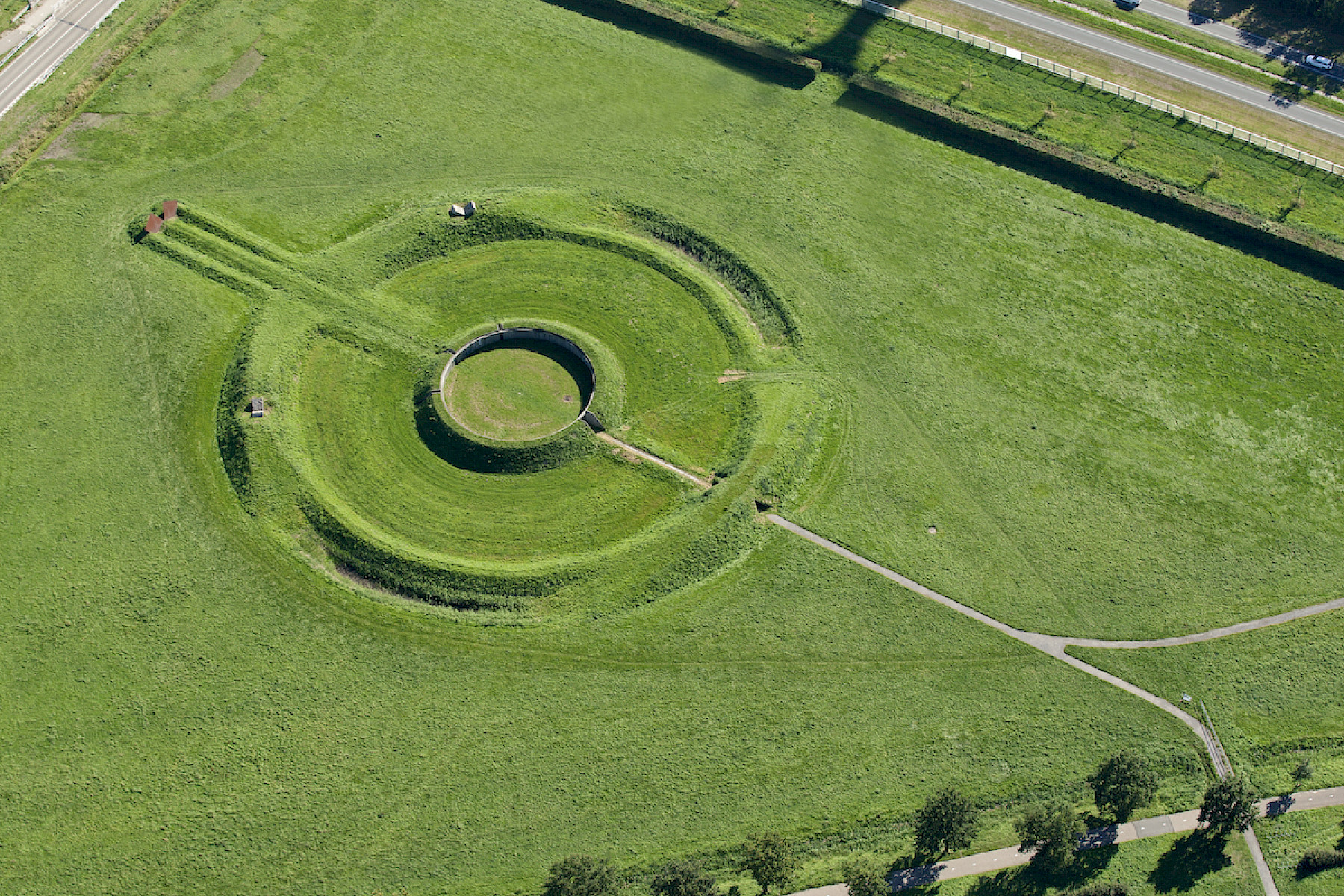Read more about Observatory
Just outside Lelystad, the American artist Robert Morris (Kansas City, US, 1931 - Kingston, US, 2018) created the first Land Art project in Flevoland. Originally, Morris designed the Observatorium for the open air exhibition Sonsbeek buiten de perken (Sonsbeek out of bounds) in 1971. This manifestation, which was curated by former Stedelijk Museum director Wim Beeren, showed the international trends in sculpture. In 1971, leading Land Art artists from the Netherlands and the United States were invited to create site specific works throughout the Netherlands. Morris realised his artwork in the dunes near Velsen.
After this exhibition the work was dismantled and a year later a new location was found in Flevoland. The new, vast polder landscape was an extremely suitable spot for large-scale, monumental Land Art projects. For this reason the engineers of the Rijksdienst IJsselmeerpolders (RIJP), the predecessor to Rijkswaterstaat, made available a plot of land for Morris' Observatorium in 1977. (1)
Observatorium consists of two concentric earth walls. Within these circles three V-span openings were made casting a view at the endless, open polder landscape. Through the middle steel visor one can see the sun rise at the beginning of spring and autumn, when day and night are equally long. On both sides of this visor, on the northeast and southeast sides of the circles, there are two stone wedges. Through the wedges on the east side you can see the sun rise on 21 June, the longest day. The sunrise seen through the visor on the west side, signals winter and the longest night on 21 December. Although relatively little time has passed on the land of Flevoland's newly created polders, the subject of Morris' Land Art project is the passing of time. (2)
Just like other artists in the seventies, Morris was fascinated by prehistoric monuments. In the period that Morris designed the Observatorium, Stonehenge (Wiltshire, Great Britain) became an important place of pilgrimage. The Observatorium evokes spirituality and mystery. By creating a modern version of the prehistoric megalithic monument of Stonehenge, Morris offers Lelystad a place for new rituals with age-old and universal associations. (3)
Robert Morris is an important and versatile artist and art critic. In the sixties he abandoned the traditional media and began working with more ephemeral materials such as mirrors, textile, waste matter, steam and earth. (4) Morris specialised in performance art, installations and Land Art. He is considered to be one of the main theoreticians of Minimalism but also has made an important contribution to the Land Art movement that originated in America in the 1960s and '70s.
Works by Robert Morris in the MoMA collection
Watch Omroep Flevoland's episode with Jord den Hollander about the Observatory (Dutch only).

Notes:
(1) Martine Spanjers & Annick Kleizen (ed.), (2007), De Collectie Flevoland (The Flevoland Collection), p. 457-459. Museum De Paviljoens.
(2) Amy Dempsey, (2006), Destination Art, p. 114-115
(3) Each year on a Saturday morning around 21 June the Stichting Zonnewende Flevoland (Solstice Flevoland Foundation) organises the Sunsation Festival at the Observatorium of Robert Morris. During the festival the summer solstice is celebrated through poetry, music, theatre and visual arts. For more information: www.festivalsunsation.nl
(4) Jeffrey Kastner & Brian Wallis, (1998), Land and Environmental Art, p. 292
Facts & Figures:
Location: Swifterringweg (corner Houtribweg, approach from Klokbekerweg or Edelhertweg), Lelystad
Materials: earth, water, grass, shells, steel, Bavarian granite, wood
Dimensions: circumference of 91 metres
Observatory is located on the grounds owned and maintained by Het Flevo-landschap
